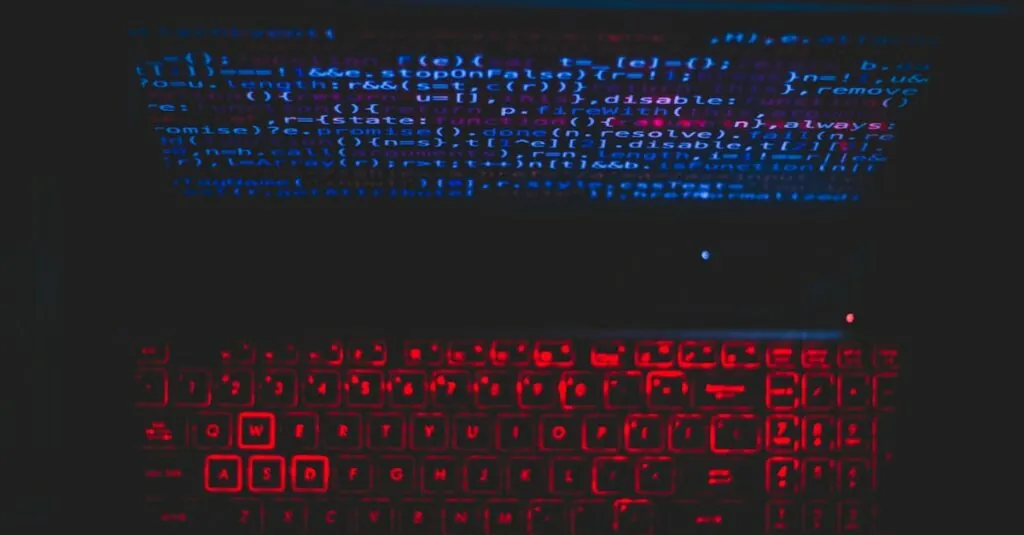Table of Contents
ToggleWhen it comes to foot surgery, sometimes the real challenge isn’t the procedure itself but figuring out the right CPT code for it. If you’ve ever had hardware left behind after a foot operation, you know the struggle is real. It’s like a surprise party, but instead of cake, you get screws and plates. Who knew your foot could double as a hardware store?
Overview of CPT Codes
CPT codes serve as standardized descriptors for medical procedures, ensuring precise communication among healthcare providers and insurers. The removal of hardware from the left foot involves specific codes that categorize the surgical actions taken. Surgeons commonly reference 20680, which pertains to the removal of an embedded device in a more general sense. When it comes to foot-specific procedures, CPT codes such as 28485 apply, addressing the removal of fixation devices from the metatarsals or phalanges.
These codes incorporate additional modifiers to specify varying nuances of each surgery. For instance, a modifier indicating whether the procedure involved multiple sites or bilaterality can affect billing and insurance coverage aspects. Tracking these codes effectively enables accurate reimbursement while reducing discrepancies during claims processing.
In some instances, inpatient settings require separate coding considerations, where the International Classification of Diseases (ICD) codes align with CPT for diagnostics and surgical interventions. Accurate documentation of the specific hardware removed can aid in substantiating the medical necessity of the operation.
Healthcare professionals must stay current with coding updates, as revisions occur annually. Omitting newer codes or guidelines might cause delays or denials in reimbursement. Thus, relief from leftover surgical hardware mandates not only careful procedural execution but thorough knowledge of applicable CPT codes for smooth operational flow.
Understanding Hardware Removal
The process of hardware removal from the left foot involves various considerations. Multiple types of hardware may be involved, each serving a distinct purpose during the healing process.
Types of Hardware in the Left Foot
Common hardware types include screws, plates, and rods. These devices support fractured bones during recovery. Screws typically stabilize joints or fractures, while plates provide surface support to maintain alignment. Surgeons may use rods for intramedullary fixation in long bones. Each piece of hardware can significantly impact the foot’s mechanics and function.
Reasons for Hardware Removal
Several reasons exist for removing hardware from the left foot. Persistent discomfort often prompts removal, especially if hardware causes pain. Infections may develop around embedded devices, necessitating their extraction. Additionally, complications like irritation or mobility issues can arise, further indicating the need for intervention. Surgeons frequently assess the need for removal based on the patient’s overall recovery and any ongoing symptoms.
CPT Code for Removal of Hardware Left Foot
Understanding the correct CPT code for removing hardware from the left foot is essential for accurate billing and communication. The coding includes specific details about the procedure.
Specific CPT Codes
Common CPT codes for hardware removal from the left foot include 20680 and 28485. Code 20680 pertains to general device removal, while 28485 targets foot-specific procedures. Modifiers may accompany these codes to clarify the circumstances of the removal, such as multiple sites or bilateral procedures. Accurate selection of these codes is necessary to ensure proper insurance coverage and minimize reimbursement issues.
Documentation Requirements
Thorough documentation is critical when removing hardware from the left foot. Surgeons must record the type of hardware removed, the reason for removal, and any complications encountered. Detailed notes provide clarity for both coding purposes and insurance claims. Maintaining accurate records also aids in tracking patient progress and justifying the necessity of the procedure. It’s vital to follow any updated guidelines related to documentation to ensure compliance and facilitate successful claims processing.
Factors Influencing CPT Code Selection
Key elements impact the choice of CPT codes for hardware removal from the left foot. Understanding these factors ensures accurate billing and effective communication among healthcare providers.
Patient’s Medical History
A patient’s medical history provides invaluable context for code selection. Conditions such as diabetes or previous surgeries can affect the likelihood of complications, influencing the choice of codes. Surgeons must document any chronic conditions or previous foot surgeries accurately. This detailed record supports the necessity of the procedure and justifies the selected codes. Knowledge of a patient’s history leads to better decisions regarding intervention and coding relevance. Comprehensive medical histories facilitate smoother communication with insurers and aid in potential reimbursement processes.
Complexity of the Procedure
The complexity of the procedure significantly determines the appropriate CPT codes. Procedures involving multiple hardware pieces or requiring advanced techniques necessitate different coding standards. Surgeons need to assess each case meticulously, as the presence of complications or challenging anatomical factors can influence code choices. Moreover, additional modifiers may apply to indicate specific surgical circumstances. Precise documentation of the procedure’s complexity enables accurate coding for billing purposes. Careful consideration of these factors directly impacts reimbursement, ensuring that healthcare providers receive appropriate compensation for services rendered.
Navigating the intricacies of CPT coding for hardware removal from the left foot requires a keen understanding of both the procedure and the codes involved. Accurate documentation and awareness of the specific codes are essential for effective communication with insurers and ensuring proper reimbursement.
Surgeons play a crucial role in assessing the need for hardware removal and must remain vigilant in recording all relevant details. By staying informed on coding updates and maintaining thorough records, healthcare providers can streamline the billing process and enhance patient care. Ultimately, a well-executed approach to hardware removal not only alleviates patient discomfort but also supports the financial aspects of surgical practice.




